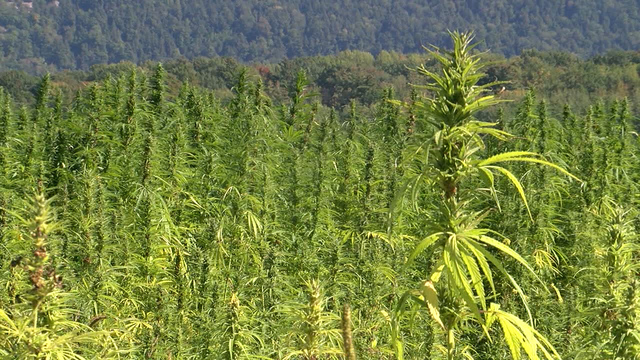Oregon Attorney General Billy J. Williams expressed concern over the lack of effectiveness Oregon’s regulations have shown when it comes to reducing the black market and keeping cannabis within the state’s legal borders.
“Overproduction creates a powerful profit incentive, driving product from both state-licensed and unlicensed marijuana producers into black and gray markets across the country,” he wrote in The Oregonian Jan. 12.
As Williams tells it, Oregon’s cannabis producers are putting out more product than they can sell – and that’s contributing to an increase in seizures at the airport and on interstate highways. It is imperative, he wrote, for state leaders to come together to ensure the regulatory framework in the state properly addresses these concerns.
How much regulation is too much?
Indeed, regulation is a delicate balance. Too much and you’ll see the emergence or strengthening of a black market set up to circumvent overly-restrictive rules. Too little and you have the potential for public safety issues. As states throughout the U.S. grapple with the question of how much the government should be involved in regulating the cannabis industry, advocates and business owners are speaking out against ineffective frameworks in existing legal states.
During a November 2017 MjBizCon at the Las Vegas Convention Center, hosted by Marijuana Business Daily, nearly 20,000 people gathered to discuss the challenges and opportunities facing the cannabis business community. Naturally, regulation was a topic of discussion.
Flow Kana’s vice president of community relations Amanda Reiman spoke during a session titled “Tapping the New $4B California Market,” during which she emphasized the difficulty of doing business in highly regulated markets, like California.
“California is a difficult state to do business in,” she said. California’s extensive regulatory adult-use cannabis framework was being developed at the time. “I don’t want to understate how difficult it is is to sell marijuana in a state that overregulates everything.”
In December, the California Bureau of Cannabis Control issued its first temporary licenses for commercial cannabis businesses and recreational sales began in some cities on Jan. 1 under emergency regulations.
Both recreational and medical states must wrestle with the complexities of regulation. The rulemaking process for medical marijuana programs has been a topic of discussion in states like Louisiana, which experienced significant delays in the implementation of their medical marijuana program.
The Louisiana Medical Marijuana program was first proposed in 1978 but never got off the ground due to the lack of a regulatory framework at the time. The Louisiana House and Senate passed legislation again in 2015, this time requiring three agencies to oversee the various rulemaking activities of the state’s medical marijuana landscape. Medical marijuana is expected to become available to Louisiana cannabis patients no sooner than 2019.
Sen. Fred Mills wrote on the matter in an email interview with Marijuana.com in October.
“I believe the biggest challenge has been putting all of the pieces together to make this work. There are so many entities involved; the Board of Pharmacy, Board of Medical Examiners, Department of Agriculture, LSU Ag Center, Southern Ag Center, and now their contractors,” he said. “In reality, a lot has been happening, but to do this with full accountability you have to go through rulemaking and public bidding processes and all of this takes time.”
While Oregon is seeing a surplus of cannabis products leaving its borders, Nevada experienced a brief but significant shortage after its regulatory framework failed to address the question of who, exactly, would distribute cannabis and whether the existing recommendation would allow for an adequate supply.
It didn’t: Gov. Brian Sandoval issued an emergency declaration to replenish the states’ marijuana supply just one week into its recreational opening.
It’s not just the cannabis industry
Regulations apply to every commodity manufactured, processed, sold or traded in the United States. Many industry leaders have encountered regulatory challenges that have affected business practices in some form or another; in some cases preventing said businesses from forming at all.
During a Nov. 2017 “View From the Top” session of the Stanford Graduate School of Business, JPMorgan Chase chairman and CEO Jamie Dimon discussed how ineffective regulations hurt business and negatively affect the economy as a whole, particularly by restricting new business owners from entering the market.
“The reason [many small businesses were never formed]is lack of access to credit, and regulations,” Dimon told the students.
The more heavily regulated an industry, the higher the cost of entry and bigger the challenge for those without access to adequate capital. But not all regulations result in a successful black market – only ineffective ones.
“If regulation is easy to adopt and universal and doesn’t pick favorites, then it will reduce the black market because there will be incentives for everyone to get on board,” said Stewart Richlin, an attorney who specializes in marijuana law. “But if the hurdles in regulation are too big and exclude too many people, then it will actually create a black market.”
How are black markets formed?
Black markets exist for every prohibited product in the world — and even some markets where the legal supply of the good is cost-prohibitive as a result of overwhelming demand or inflated prices due to over-taxing.
“If the taxes are incredible, they will create a secondary [black]market because cannabis can be so much cheaper than the black market,” said Richlin, who has represented more than 600 cannabis businesses in his legal career. “Simply put, higher taxes spurn more secondary market growth.”
Perhaps one of the most relatable examples of the emergence of a black market in response to taxing and regulation is the Speakeasy era following the U.S. prohibition of alcohol in the 1920s. During this time, saloon owners and alcohol producers suddenly found themselves on the wrong side of the law. This didn’t sit well with those in the business of making money off alcohol production and sales. It didn’t stop them, either. In fact, it resulted in the emergence of a robust, and violent, underground alcohol market that gave rise to at-home, illegal production of alcohol like “bathtub gin” and “moonshine.”
Businesses in the fashion industry are all too familiar with the effects of pricing on the health of an industry’s black market. Counterfeit purses, clothing, jewelry, and accessories have been a thorn in the side of designers for decades as blue-collar workers search for a more affordable alternative to the en vogue, and often highly priced, looks glittering the latest runway.
While counterfeit products may be priced more affordably for the average consumer, makers of these products are in violation of the patents and trademarks legally held by the businesses who created the original.
Economists, legislators, and individuals throughout history have had little success in finding a way to avoid the emergence of a black market. Taking the time to be considerate of all the factors involved and revising as needed, as Oregon AG Williams is suggesting, is one step toward a healthy, robust and regulated cannabis marketplace.
credit:marijuana.com





